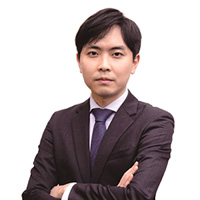Blockbuster show at Hoam highlights Buddhist art from Asia
By Choi Si-youngPublished : June 5, 2024 - 14:53

A special exhibition on Buddhist art in East Asia at the Hoam Museum of Art has attracted over 60,000 visitors since March, averaging over 1,000 a day in what could be one of the country’s biggest art shows this year.
“Unsullied, Like a Lotus in Mud,” explores contributions women made to the religion and, as the title suggests, their struggles along the way with 92 pieces including Buddhist statues, paintings and scriptures.
The gilt-bronze standing Avalokitesvara Bodhisattva, a Buddha statue considered the peak of the 7th-century Buddhist art in Baekje (18 BC to 660 AD), is one of the 47 items on public view for the first time. Of the 92 pieces, 48 are from Korea, followed by 25 from Japan and 19 from China.
“They are all treasures we usually can’t have in one place,” said Kim Young-na, former director of the state-run National Museum Korea.
“The treasures have all come together. It’s magnificent,” said Seinosuke Ide, a professor of art studies at Japan’s Kyushu University, “This is a dream come true for all those studying Buddhist relics.”
Visits by celebrities like BTS leader RM put a spotlight on the show. Samsung Electronics Executive Chairman Lee Jae-yong made five visits in a show of support for the Samsung Foundation of Culture, which reached out to 27 overseas Buddhist collections in preparation for the exhibition that took five years to be realized. The exhibition runs through June 16.
The foundation, launched in 1965 by Lee Byung-chull, the Samsung founder, represents the conglomerate’s efforts to preserve art and artifacts. The Lee family gifted over 23,000 pieces of art and artifacts to state-run museums including the National Museum of Korea in 2021, a year after the death of Lee Kun-hee, Jae-yong’s father.





![[Herald Interview] How Gopizza got big in India](http://res.heraldm.com/phpwas/restmb_idxmake.php?idx=644&simg=/content/image/2024/11/20/20241120050057_0.jpg&u=20241120164556)


![[KH Explains] Dissecting Hyundai Motor's lobbying in US](http://res.heraldm.com/phpwas/restmb_idxmake.php?idx=644&simg=/content/image/2024/11/20/20241120050034_0.jpg&u=)
![[Kim Seong-kon] Farewell to the vanishing John Wayne era](http://res.heraldm.com/phpwas/restmb_idxmake.php?idx=644&simg=/content/image/2024/11/19/20241119050096_0.jpg&u=)
![[Graphic News] 70% of S. Koreans believe couples can live together without tying the knot: survey](http://res.heraldm.com/phpwas/restmb_idxmake.php?idx=644&simg=/content/image/2024/11/19/20241119050098_0.gif&u=)







![[Today’s K-pop] Blackpink’s Jennie, Lisa invited to Coachella as solo acts](http://res.heraldm.com/phpwas/restmb_idxmake.php?idx=642&simg=/content/image/2024/11/21/20241121050099_0.jpg&u=20241121172748)